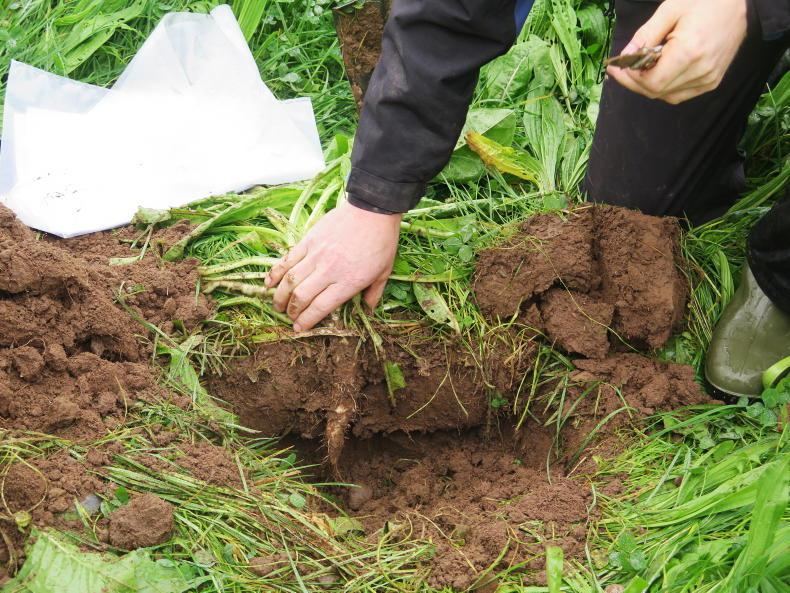New crops, better grazing infrastructure, decision support tools and a re-think of farm stocking rates, are among the strategies Irish farmers will need to adopt to cope with the changing climate, a leading Teagasc scientist has said. The latest climate data from Met Éireann shows that Ireland’s climate is changing. Comparing the 30-year periods 1961-1990 and 1991-2020, the data shows that Ireland has warmed by 0.7°C, become 7% wetter and 4.5% sunnier.
New crops, better grazing infrastructure, decision support tools and a re-think of farm stocking rates, are among the strategies Irish farmers will need to adopt to cope with the changing climate, a leading Teagasc scientist has said.
The latest climate data from Met Éireann shows that Ireland’s climate is changing. Comparing the 30-year periods 1961-1990 and 1991-2020, the data shows that Ireland has warmed by 0.7°C, become 7% wetter and 4.5% sunnier.
With this trend set to continue, the warmer, wetter climate will be favourable to grass growth – but not necessarily grass availability and utilisation at key times of the year.
Speaking at the Teagasc Signpost conference in Clonmel recently, Dr Elodie Ruelle, senior research officer at Teagasc Moorepark, explained how and why farmers will have to adapt their traditional farm management practices.
Grassland adaptation
While the increase in grass growth in the winter looks positive, trafficability might be a challenge, she pointed out. It may not be possible to take advantage of the increased spring growth, if soil conditions restrict grazing.
Ruelle added that on-farm grazing infrastructure will have to be improved to ensure good access to paddocks early in the year, especially if the increase of spring growth is also associated with an increase in rainfall.
Speaking to the Irish Farmers Journal, Ruelle said this would include using spur roadways and back-fencing paddocks to prevent damage to fields.
“It’s about being able to get animals to the grass that is available to graze,” she added.
At the other end of the spectrum, reduced summer growth due to warmer and drier weather in July, August and September will pose a challenge in terms of managing summer and autumn grazing. This could have a knock-on effect and cause difficulty for farmers’ ability to save enough fodder for feeding over winter.
That said, a projected increase in growth for the months of October and November could help extend grazing (weather conditions permitting) and reach target closing and opening farm covers, the Teagasc researcher pointed out.
However she warned that the risk is for more extreme years in which summer would see little to no growth.

Farmers will need to increase their silage and forage stocks, to ensure adequate buffer feed is available during drought periods.
“Those years, while rare, will become more frequent in the future,” she said adding that farmers will need to increase their silage and forage stocks to ensure adequate buffer feed is available during those periods. High-quality fodder stocks will be important to maintain milk yields and constituents during drought-pressured months, or farmers will lose money on their milk cheques.
Switching to more diverse swards and more drought-resistant grasses could also help farms adapt to drier summers. Deep-rooting plants like chicory and plantain reach further into the soil to reach scarce moisture in a drought, which means they can keep growing in circumstances where perennial ryegrasses will wilt or die.
Ruelle added that decision support tools, such as PastureBase Ireland and grass growth prediction through grass measuring, will be essential to farmers, helping them to better anticipate grass fluctuations and take early action.

The chicory plant has tap roots, which can access water deeper into the soil than perennial ryegrass.
Stocking rate key
However, she also added that stocking rates on farms will be one of the main factors in their resilience to the weather challenges.
“Having the right number of animals, depending on the grass growth potential of the farm, taking into account management and soil type, will be vital. Having too many animals reduces the flexibility of the system,” she warned.

Barley yellow dwarf virus is likely to increase in a warmer climate.
Teagasc is beginning to model how tillage crops will be affected by the changing climate. While concrete results are not yet available, Ruelle said that overall yields, particularly of winter crops, are likely to increase due to warmer winter months.
It is also possible that new crops could be introduced into Ireland, such as soybean and sunflower, as the climate becomes more favourable to them.
On the downside, increased winter and spring rainfall, added to greater variability in rainfall levels, will make sowing and harvesting more difficult.
Changing up crop types is one way farmers can adapt to this, she said, suggesting that rye could become one of those options.
“Rye can be planted from mid-September and will increase the window for both planting and harvesting, increasing the flexibility on-farm and the resilience,” Ruelle explained.
Teagasc is working on a decision-support tool which will predict farm- and field-specific crop optimal harvesting and sowing windows, linked to the farm’s location and weather, and its soil type. This will help farmers to choose the best crop rotations for their farm.
Diseases
Milder winters will bring an increase in both pests and diseases in crops.
The virus most likely to surge in response is barley yellow dwarf virus (BYDV) which is spread by aphids. Warmer winters will be more favourable for both the aphids and the virus itself.
Teagasc is currently researching how to predict the best timing for insecticide spraying in the current and future climate. Ultimately, the aim is to generate warning messages similar to those currently issued for blight in potatoes.





SHARING OPTIONS: